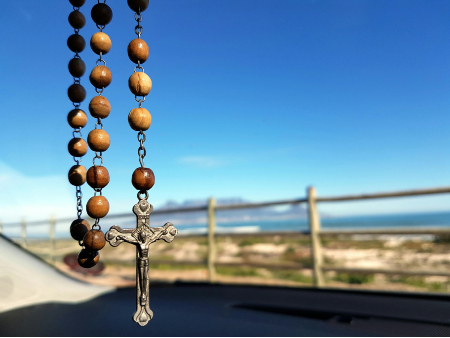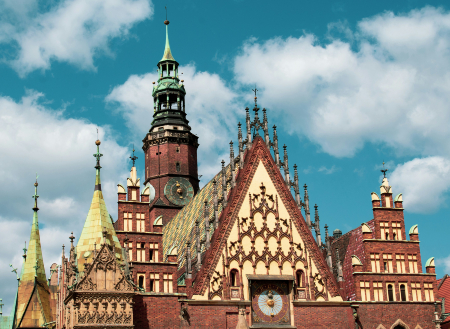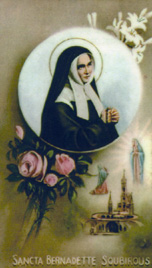We ask you, humbly: don't scroll away.
Hi readers, it seems you use Catholic Online a lot; that's great! It's a little awkward to ask, but we need your help. If you have already donated, we sincerely thank you. We're not salespeople, but we depend on donations averaging $14.76 and fewer than 1% of readers give. If you donate just $5.00, the price of your coffee, Catholic Online School could keep thriving. Thank you.Help Now >
Johann Balthasar Neumann
FREE Catholic Classes
Born 1687 at Eger; died 1753 at Würzburg, master of the rococo style and one of the greatest and most productive artists of the eighteenth century; distinguished as a decorator, but more so as an architect.
He came from Eger to Würzburg as a cannon founder, and served chiefly with the French army After he had travelled to perfect himself as an architect, he followed that profession in southern Germany and on the Rhine, entering into such successful competition with the French masters of the period that de Cotte and Boffrand, who judged his plans for the episcopal palace at Würzburg, afterwards eagerly laid claim to the authorship. While in the service of Prince-Bishop Franz von Schönborn (1719), Neumann laid the cornerstone of the palace (1720). It is ostentatious but habitable, a vast rectangle, 544 ft. by 169 ft., with five well laid out courts and three entrance gates ornamented with pilasters, columns, and balconies. The throne room with the splendid adjoining state apartments, and the court chapel, although not externally remarkable, excel all the rest in sumptuous splendour with an enormous outlay in material and skill. The baroque style of the edifice is here replaced by the most finished decorative rococo. The details are frequently of marvellous beauty; the arrangement, notwithstanding the overcrowding, is not inharmonious, although in combination it is bizarre and whimsical. The rococo artist obviously intends to produce not only picturesque effects, but a demonstration of his unrestricted power over material substances. The interior decorations for a palace built at Bruchsal for another Schönborn, Bishop of Speyer, are magnificent, though simpler. For a third Schönborn he built a castle at Coblenz which was likewise distinguished for immense, harmonious proportions and splendid arrangement. A palace in Werneck is also his work. He completed the designs for palaces in Vienna, Carlsruhe, etc. The cathedral of Speyer, destroyed by the French army, was restored by Neumann with a clever adaptation of the existing conditions. In the façade, which was later removed, he followed the prevailing taste in every detail. In the restoration of the west side of Mainz cathedral he was unsuccessful, and more so with his piecework on the cathedral of Würzburg. In addition to these restoration he built the Pilgrims' church at Vierzehnheiligen, and the collegiate church at Neresheim, both important buildings, with oval spires, vast areas, and stately proportions. They are in rococo style , which is no longer attributed entirely to him. Among his other works are the Dominican church at Würzburg, the family chapel of the Schönborn in the same place, and the church at Grösweinstein. He made numerous designs for parterres, buildings for practical purposes, and objects of handicraft. He was a product of his age, though he towered above it by reason of the unusual artistic talent with which nature had endowed him. More recent times have, within certain limits, justified his choice of style.
 Hi readers, it seems you use Catholic Online a lot; that's great! It's a little awkward to ask, but we need your help. If you have already donated, we sincerely thank you. We're not salespeople, but we depend on donations averaging $14.76 and fewer than 1% of readers give. If you donate just $5.00, the price of your coffee, Catholic Online School could keep thriving. Thank you. Help Now >
Hi readers, it seems you use Catholic Online a lot; that's great! It's a little awkward to ask, but we need your help. If you have already donated, we sincerely thank you. We're not salespeople, but we depend on donations averaging $14.76 and fewer than 1% of readers give. If you donate just $5.00, the price of your coffee, Catholic Online School could keep thriving. Thank you. Help Now >








 Daily Readings for Tuesday, April 16, 2024
Daily Readings for Tuesday, April 16, 2024 St. Bernadette: Saint of the Day for Tuesday, April 16, 2024
St. Bernadette: Saint of the Day for Tuesday, April 16, 2024 Prayer for our Family #1: Prayer of the Day for Tuesday, April 16, 2024
Prayer for our Family #1: Prayer of the Day for Tuesday, April 16, 2024


